On a cold winter’s eve, my phone rang and the voice on the phone said, “would you like to be a part of a historic team?”
Confused yet intrigued, I replied “yes” in my trembling voice.
It was from the CEO of VPRanks.com.
Being jobless at the time, I didn’t have many options. After countless rejections and unanswered emails from recruiters, I was sulking away at home and this was the first real break I got.
So without a shadow of a doubt, I decided to give it a try.
Therefore, in 2014 I joined a small team of extraordinary gentlemen, setting out to achieve something unimaginable.
Now fast forward to today and that opening line on the phone call still resonates in my ears.
VPNRanks.com is one of the biggest websites in the VPN industry. Future projections predict that the current $20 billion VPN industry will continue to grow and will be worth $36 billion by 2022.
Such lucrative nature of the industry makes you question its future. Especially when you see some of the biggest names in content publishing entering the market. Mashable, PCMag, and TechRadar are just to name a few and are fighting it out to get a bite out of the apple.
But, how did the industry reach its current situation? What were the factors involved in reshaping the VPN affiliate industry and turning it on its head? What impact did it have on VPN conversion rate? What role did VPNRanks.com play in all of this?
Allow me to take you through our team’s journey and share my insights with the world.
But before I get to that, let’s travel back in time.
A roundup of VPN Industry Growth from $12-$36 Billion
- VPN Industry, a Niche Waiting to be Discovered…
- Only the Strongest Survived
- Enter Persona Based Websites
- Factors Propelling the VPN Industry into Stardom
- Users Becoming More Aware & Tech-Savvy
- Network Backed Content Publishers Entering the Industry
- Where Does VPNRanks.com Stand Among these Websites?
- Disruptive Forces Influencing Cost of Advertising
- Impact on Conversion Rates: Transition from Ranking to Brands Power
- What Happens if we Place a VPN with Low Brand Power at the Top?
- How VPNRanks.com Improved Brand Image of a VPN & Increased its Conversion Rate
VPN Industry, a Niche Waiting to be Discovered…
If I could get my hands on a plutonium-fueled DeLorean, I’d time travel back to 2011. The VPN affiliate industry was like a large gold mine waiting to be discovered.
Only a handful of VPN review websites existed and most of them were just starting out. This meant that competition was not as fierce as it is today. Some of them included VPNSP.com, BestVPNProvdier.net, BestVPNService.com, BestVPN.com, VPNSpecial.com, VPNfan.com, and more.
However, I must add that the website layout and design aesthetics weren’t user-friendly by any means and were borderline cringy. To prove my point, I used Wayback Machine to show you how some of these websites looked.
Let’s start with my own website, VPNRanks.com and how it used to look like in early 2014:
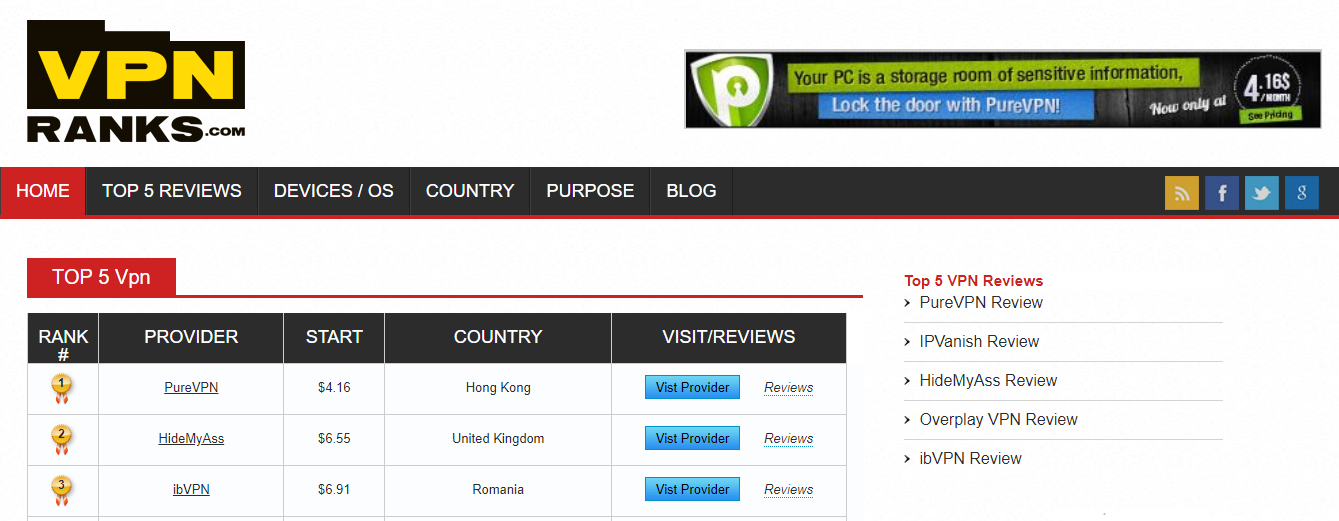
Other websites placed heavy emphasis on placing VPN providers ranking tables right in the first fold. Here’s a look at BestVPNProvider.net back in 2013:
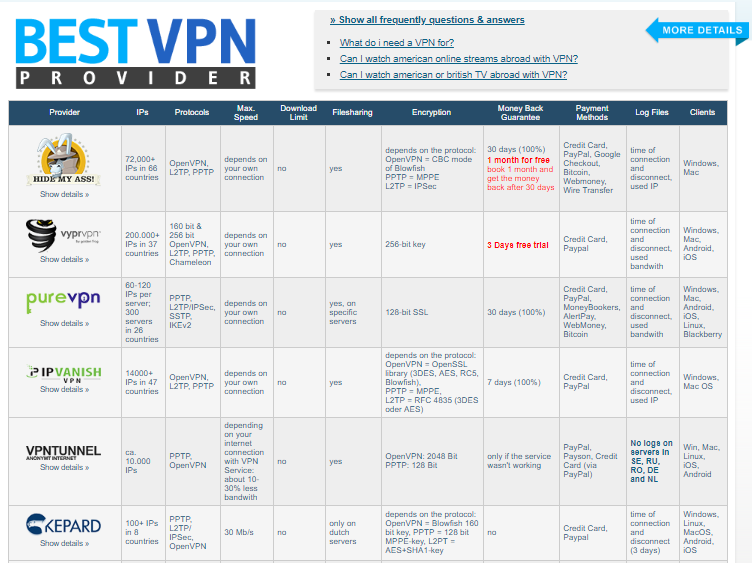
Here is how VPNSP.com used to look like in 2011:
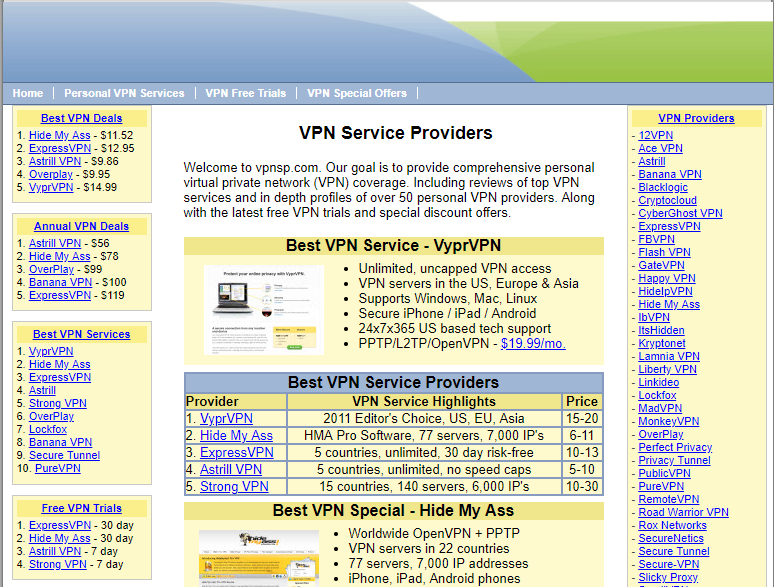
VPNfan.com had more aesthetically pleasing design at that time (2014):
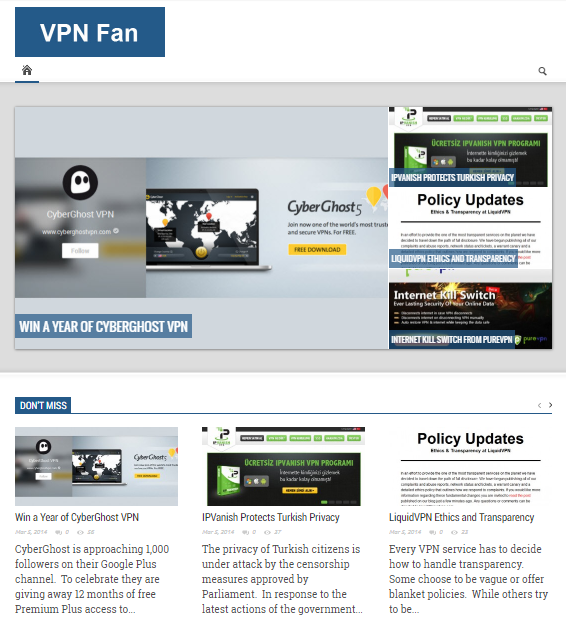
But with little emphasis paid on how website design and limited competition in the industry, rankings of VPN providers on any website played a vital role on their conversion rate.
Any VPN provider ranked at the top of any website would be seen as the best and would have a higher conversion rate than those placed at the bottom of the list.
The top position most certainly guaranteed high conversions, so VPN providers would enjoy high sales volume while review websites would benefit from the compensation received for those sales.
Therefore, it was all about Game of Rankings.
Only the Strongest Survived
That said, two dominant players were making inroads in the industry while others were busy unearthing the VPN niche: BestVPN.com and BestVPNService.com.
Since there wasn’t much competition and search engine algorithms weren’t as smart as today, these two dominated the search engine rankings and VPN providers ached to grab the top position as if it was the Iron Throne.
Sadly, the niche is such that only the strongest survive. Most of the review websites I just mentioned are nowhere to be seen today. Some of them still exist but have fallen way behind, perhaps into oblivion.
On the other hand, BestVPN.com is still a force to be reckoned with. Over the year, the website has gained a massive following and today it has 5.8 million organic visitors every month.

BestVPN.com Stats on Ahref (September, 2021)
Enter Persona Based Websites
As more and more people started to know about the VPN industry and the affiliate model, a new era of websites entered the market – persona based sites.
What do I mean by persona based? Well, a VPN offers several benefits to users and used for various purposes. These websites took a particular need and targeted that specific audience.
To help you understand what I mean by this, take the case of torrents. You will find hundreds of websites that specifically offer solutions and fixes related to torrenting.
Even their URL is also designed in such a way that it indicates a niche specific website, like best-bittorrent-vpn.com or bestvpnfortorrenting.online.
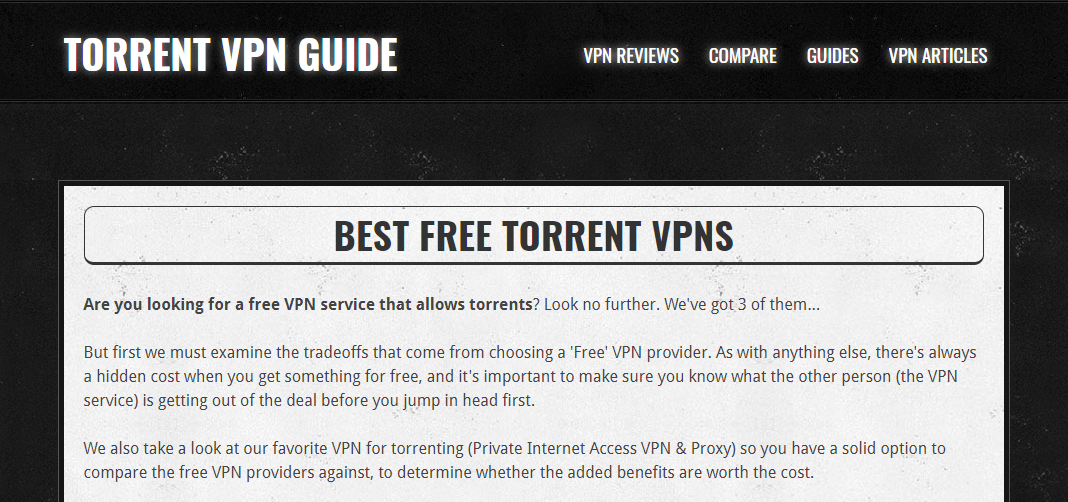
Same goes for other personas like streaming and Kodi. Websites like KodiVPN.co, SEO-Michael, and WirelessHack writing extensively on Kodi and cater their audience.
I reached out to several persona-based websites and tried to get their insights about their experience in the industry, is their niche still profitable, and how did they view conversion rates of VPNs.
KodiVPN.co’s founder and CEO, Josh got in touch and responded:
When I started my website, I didn’t know much about Kodi and stumbled upon this niche through a friend’s experience. When I expanded my research, I got to know that the trend of Kodi was on the rise. Initially, the experience was superb, as there were not many websites writing on this topic and providing solutions to users. As for revenue, the niche has shrunken due to several reasons. But in my experience, I have tried several VPN providers and shuffled them on my website. Each provider’s performance varied with time and its peculiar that when I placed any service at the number one spot, it didn’t necessarily meant a lot of conversions…
But among several persona-based websites, there were few review sites providing misleading information to users. Their motive? To make some extra bucks. However, most of them cannot be seen anywhere these days, especially in search engine rankings.
This showed that these persona specific websites had disrupted the industry and taken a major chunk out of the web traffic (visitors) from other VPN review sites.
Factors Propelling the VPN Industry into Stardom
As you can see, the VPN industry was a niche on the rise, but what gave it that exponential boom?
Certain incidents such as Edward Snowden blowing the whistle on NSA, Wikileaks, Apple iCloud hack, data retention bills, and Ashley Madison hack propelled the VPN industry into stardom.
Edward Snowden Exposing Governmental Surveillance

In 2013, Edward Snowden lifted the lid on governmental surveillance. NSA, along with intelligence agencies from other nations, mainly from five eyes, performed blanket surveillance on users, monitored the web traffic entering and exiting their nation, and recorded every move of citizens.
If that’s not all, they would wiretap phones of certain individuals and listen in on their conversations. These operations performed by NSA were outside the limits of the US Constitution and intelligence agencies acted without any oversight.
Since the government was monitoring and recording the online behavior of users, keeping taps on their browsing activities and conversations, VPN was the perfect solution to preserve their privacy. Hence, the use of VPN was recommended by several websites, which helped spread its usefulness among users.
Celebrities Personal Pictures Leaked from Apple iCloud Hack

Being an iPhone user, I stored most of my pictures on iCloud and thought of it as a safe storage place. However, after the iCloud hack in 2014, that notion changed. Numerous celebrities were a target of this attack, as their personal pictures were stolen and posted on imageboard websites.
That attack was just the start of things. First, it meant that Apple’s iCloud was not impenetrable and user’s data could still be at risk.
Because Apple’s products were not as secure as once thought of, users resorted to third-party tools for ensuring their privacy. One of these tools was a VPN and this made it gain popularity among Mac and iOS communities.
37 Million Ashley Madison Users Data Hacked

Ashley Madison is a prominent American dating website and in 2015, hackers got hold of approximately 100 GB worth of sensitive data of 37 million Ashley Madison users.
The data contained information such as username, first and last name, passwords, email addresses, phone numbers, home addresses, credit card details, and transaction information of individuals.
Hackers dumped all this data on the dark web, which led to blackmail, suicides, and not to mention, an end to numerous long and happy marriages. While you may think that cheaters got what they deserved. Perhaps, but what if you were at the receiving end?
Security concerns and privacy threats, such as with Ashley Madison’s case, further helped the VPN industry. VPN was seen as a powerful tool that can help users secure their privacy and don’t allow anyone to steal their sensitive data.
Mandatory Data Retention Laws & Surveillance Bills
If you thought hacking incidents weren’t enough to put your privacy at risk, bring in mandatory data retention bills. Governments of different nations ordered Internet Service Providers (ISP), web-based companies, and telecom firms to store records of user metadata.
This would include your personal details, online activities (browsing and download history), emails, text messages, calls, and a host of other sensitive data. So if you wish to circumvent the mandatory 6-year retention period imposed under the UK’s data retention laws then we suggest you start using one of the most secure VPNs for the UK.
Along with data retention laws, several governments passed surveillance bills giving unprecedented power to intelligence agencies to monitor and record user activities. UK’s Investigatory Power Act (or Snooper Charter) is one of the several surveillance bills proposed and implemented around the world.
Users Becoming More Aware & Tech-Savvy
The end result of these worldwide privacy-related incidents and governmental bills was that there was a surge in user awareness about online vulnerabilities and privacy risks. Users were becoming more tech-savvy and were looking up more technical queries about their privacy.
This change was evident among VPN review websites. Before these events, VPN providers listed on the first position would be seen as the best possible solution.
However, as more and more privacy-related happenings started to occur, review websites had to recommend different VPNs for different purposes.
While this was the case with review websites, what about VPN providers? How did their customer success enhance and how user queries evolved?
To find out answers to these questions, I reached out to different VPN providers to get their insights.
ExpressVPN
ExpressVPN has a massive user-based, spanning to every continent. With so much diversity, they are observing a change in user queries:
Our user base has always been diverse, so we get all types of questions, reflecting all levels of technical ability. Of course, as we continue to improve our product, we’re seeing a natural reduction in certain types of basic queries as our apps and service become more intuitive and easy to use.
While their user based was evolving, so was their tech-savviness:
Digital privacy and security are important for internet users of all types, and we see that reflected in our customer base. We have customers spanning the entire spectrum of tech-savviness.
Lastly, I inquired about the steps taken by ExpressVPN to cater to this change. The response shows how it has helped ExpressVPN’s customer success:
The shift that we’re seeing is wider interest in VPNs as awareness of the importance of online privacy and security grows. Ultimately, users of all types share the same core needs—they want a fast, secure, reliable, and easy-to-use service—so that’s what we’re focused on continuing to deliver.
NordVPN
NordVPN unveiled an interesting finding as it has an increase in streaming related queries and more users are asking about privacy:
Our user base is quite diverse, ranging from tech-savvy, experienced VPN users to people who have never heard or used a VPN software before. Hence, we could not say that the queries from our users would have evolved into more technical ones. However, we do notice the increase in queries related to streaming, using VPN in restricted countries, and questions related to privacy/logging policies.
With this changing user behavior, NordVPN continues to adapt its support center:
Continuously building and implementing new features – kill-switch, cybersec, specialty servers. Educating users in our blog posts, social media, YouTube tutorials. Adapting our support help center to a convenient one for our users to search for answers themselves.
IPVanish
IPVanish had a slightly different view, as new VPN users would ask basic questions while technical questions are asked by more seasoned users:
In our estimation, we have a mixture of new user and more technical questions, mostly basic service questions from new users. Using a VPN is still a relatively new concept to many, those who ask the more technical questions already understand VPN most of the time.
As for their users becoming tech-savvy, IPVanish suggested that users are getting comfortable with VPNs over time, but most of them still don’t know how a VPN works:
…users are becoming more tech-savvy in terms of becoming more comfortable with VPNs in the sense that they can interface with a simple app, connect to a VPN endpoint and know they are secure, but not tech savvy in the sense that most people don’t understand the details behind different VPN protocols for example; they just know their internet traffic is encrypted and secure.
To adjust to the changing user behavior, IPVanish focuses on offering a simple interface in its apps:
If anything, IPVanish has always had the goal of developing VPN solutions(apps) that are designed to make VPN security more accessible and understandable by the masses as well as users who are more technical. In short, we offer a simple interface for all with more complex options available if wanted or needed.
PureVPN
PureVPN also shared details that its users based are transitioning towards being tech-savvy and asking more technical questions:
…we have observed that customers have taken a big jump from being non-technical to a more technical approach. The reason is due to the fact that PureVPN has offered multiple apps support over various devices and we are now getting more queries about protocols, encryption, privacy-related issues, and specific problems for each platform.
When asked about this change and how PureVPN has catered its users, the provider has taken multiple steps to improve customer success:
PureVPN’s onboarding methods have definitely seen a major change in which many customers have joined in with ease to subscribe and proceed to use PureVPN for their desired purposes. Secondly, PureVPN Support Center has gotten a major upgrade by offering many handy guides, covering most of the devices & use cases that are in use from a normal user to an advanced technical user as well. Lastly, we didn’t just stop there, we have educated customers by running certain emails that catered to technical and non-technical users alike to make sure that each customer gets the best of what they need…
Network Backed Content Publishers Entering the Industry
With customers evolving and gaining awareness, let’s fast forward to 2022, and the VPN affiliate industry is no longer dedicated to VPN review websites. Big publishers and news websites, backed by large content networks, are also a part of the competition.
Websites like Mashable, PCMag, and TechRadar are now a major force in the VPN industry. What prompted them to enter this business?
One of the prominent reasons is the lucrative nature of this niche. According to Statista, the VPN industry could be worth $27.1 billion by 2020 and $35.73 billion by 2022.
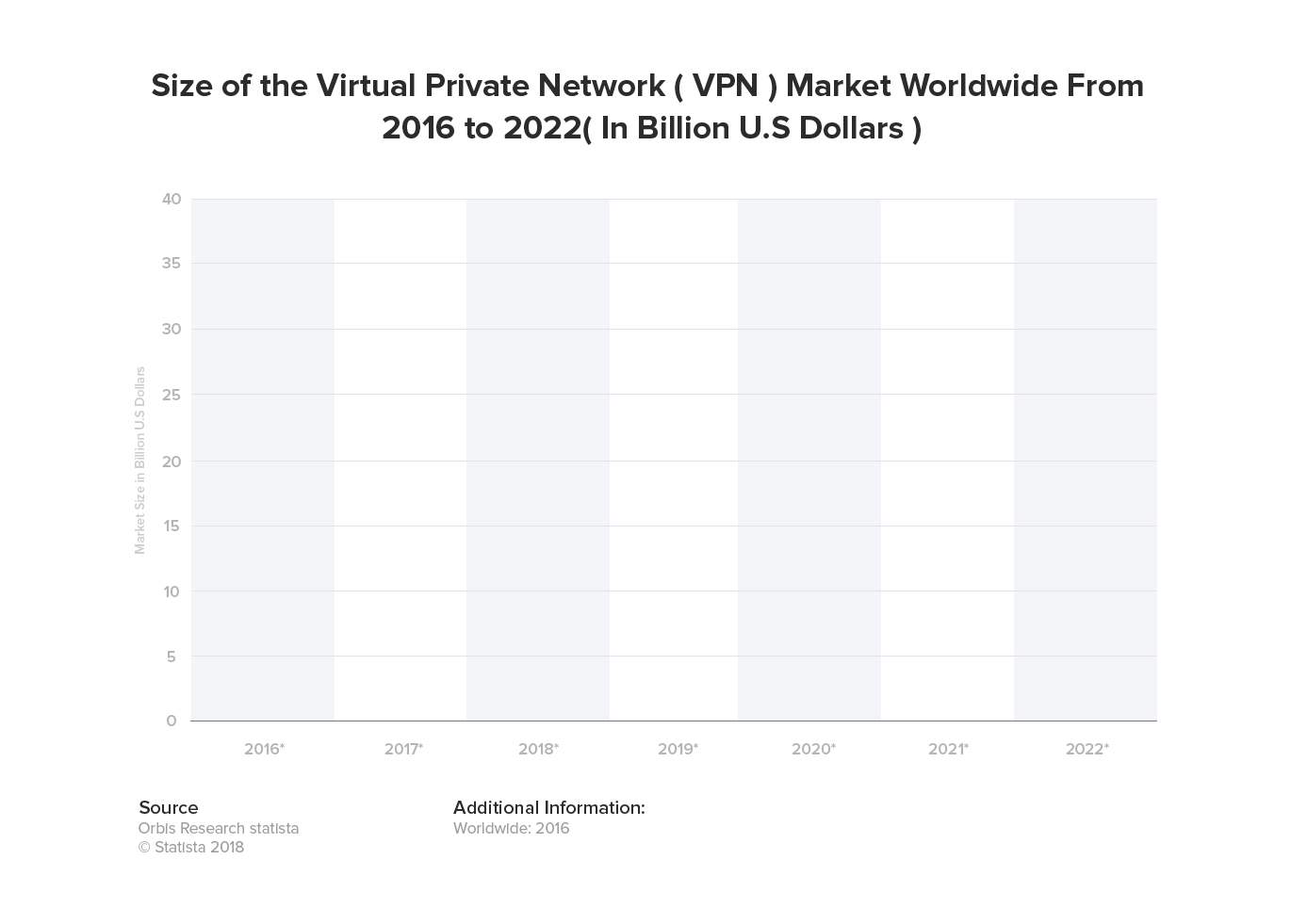
We can see this change happening right now in the industry, as top content publishers dominate the search engine rankings on some of the most important keywords.
For instance, if you search ‘best VPN’ or ‘VPN reviews’ on Google, you will find the likes of TechRadar, PCMag, and Cnet among the top 5 organic rankings.
Therefore, judging from these estimations, it’s only a matter of time before other content publishers dive into this industry. And it’s no surprise when I joined VPNRanks.com, there were only a handful of websites trying to take a bite out of the industry.
Where Does VPNRanks.com Stand Among these Websites?
Now that I’ve taken you through a brief tour of the VPN affiliate industry, let’s see where does VPNRanks.com fits in among all these websites.
The idea of VPNRanks.com was conceived back in 2013, with the website being launched later that year. The goal behind launching the website was simple, to make it one of the top VPN review websites in the world.

And over the last few years, I can say proudly say that our team has worked tirelessly towards that goal and taken the website to new heights. The website started off at zero and built its way up to achieving one million organic traffic per month.
During the course of this journey, several websites were part of the competition. These included other VPN review websites, persona-based websites, and renowned content publishers.
Disruptive Forces Influencing Cost of Advertising
While VPNRanks.com has progressed over the years, the industry was becoming highly competitive and resulting in increased cost of operations.
Anyone who is operating in the VPN affiliate industry knows that websites investing heavily in advertising (mainly Google Adwords) are a competition of a different kind.
In my experience with VPNRanks.com, I observed some forces that were so disruptive, that they changed the entire landscape of advertising in the VPN industry.
Introduction of the CPA Model

Cost per Action (CPA) is an online advertising model that allows advertisers to pay for a specific action. These actions can include signups, filling out a form, or making a sale.
For the VPN industry, it is the later, as advertisers would only pay a commission once an affiliate would make a sale. The beauty of the CPA model is that it protects the advertiser and pushes affiliates to send more qualified leads that would convert into sales.
However, the VPN industry did not have a CPA model, not until late 2015. The industry would previously work on a simple percentage-based commission structure. Affiliates would receive commissions based on the type of plan they sold.
For example, they would receive 100 percent commission on the sale of a one-month plan, 40 percent commission on semi-annual or annual plans, and 33 percent on recurring.
But as new players entered the industry with the CPA model, the simple commission-based structure became obsolete. Everyone started to move towards the CPA strategy, causing a major chain reaction.
This meant that entry for new providers and websites into the market became extremely difficult. For starters, they could not afford the high cost of advertising and many brands had low lifetime value (LTV).
Advertising Becoming Unaffordable
Since the CPA model is now being followed throughout the industry and commission-based structure is a thing of the past, the cost of advertising has increased dramatically.
This is one of the major reasons why many new entrants don’t survive in the industry. The increase in average CPA makes it difficult for most companies to afford to advertise and remain profitable.
In theory, the CPA model should protect advertisers. But with high CPAs being charged, it is no longer as profitable as it was when a simple commission-based structure was followed.
To put things into perspective, I reached out to some of the partners, gathered data about CPA, and averaged them out from January 2016 to June 2018. As you can see, the overall trend is rising and when once it used to cost around $2.00, is now somewhere close to $40. That is a 20x increase!
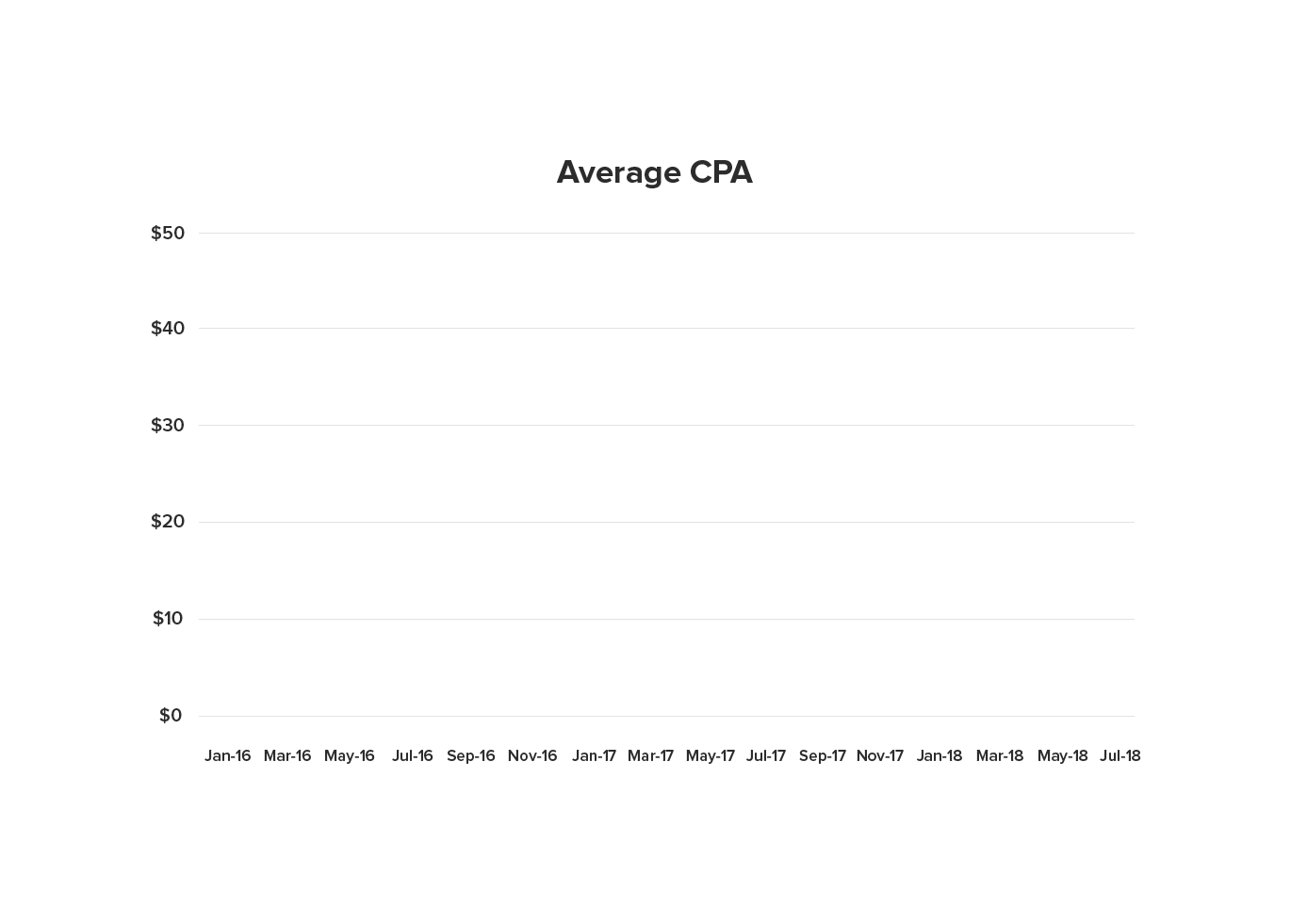
As for the sharp peaks that you see in mid-2016, those were due to a new player entering the market with a huge investment in PPC. And its name was TotalVPN.
The provider was so disruptive that it pushed the boundaries of online advertising in the VPN industry and drove its cost through the roof. This made it even more difficult for new providers and websites to afford PPC – even existing companies were taken off guard.
Low LTV of VPN Providers
The second major reason why many new VPN providers can’t compete with existing brands is due to their low lifetime value (LTV).
This is mainly because of the availability of cheaper alternatives and also because many existing providers have worked hard on their branding. Brand power is something that has picked up in recent times in the industry and providers that have amassed a die-hard user base have increased their longevity.
Take the case of TotalVPN. The provider came with all guns blazing, pouring huge sums into PPC, claiming it to have the best VPN service, offering high commissions to affiliates, and gaining a lot of traction.
But as intense as its introduction was, it also went away that quickly. Google Trend graph shows that in mid-2016, the provider was at its peak but then fizzled out over time – hence showing low LTV.
Google Removes Sidebar Ads
Like any other industry, there are some factors that you can anticipate and plan for ahead, but then there are some that are totally out of your control – like Google killing its right-hand sidebar for advertisements in 2016.
Upon removal of sidebar ads, Google released an official statement:
We’ve been testing this layout for a long time, so some people might see it on a very small number of commercial queries. We’ll continue to make tweaks, but this is designed for highly commercial queries where the layout is able to provide more relevant results for people searching and better performance for advertisers.
In my opinion, this was a significant change and one that affected the operations of many websites. If I had searched for anything on Google before February 2016, the search engine would have shown ads in the sidebar, as you can see:
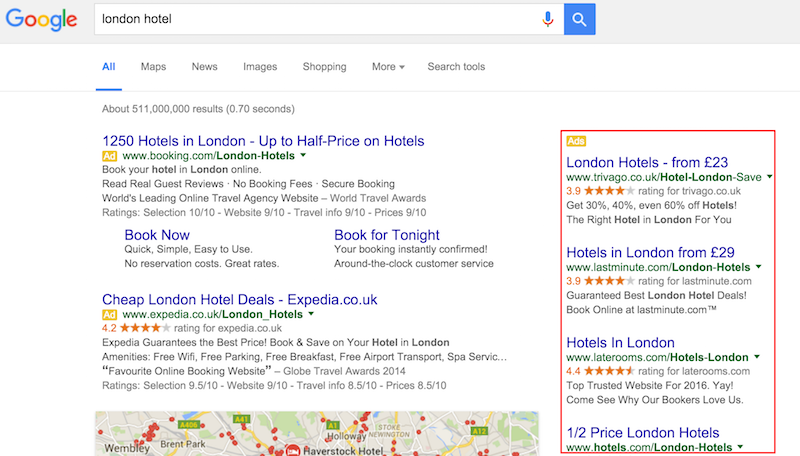
Image source: Search Engine Watch
But when you search anything today on Google, there are no side ads and first, four searches are ads, followed by organic search results.
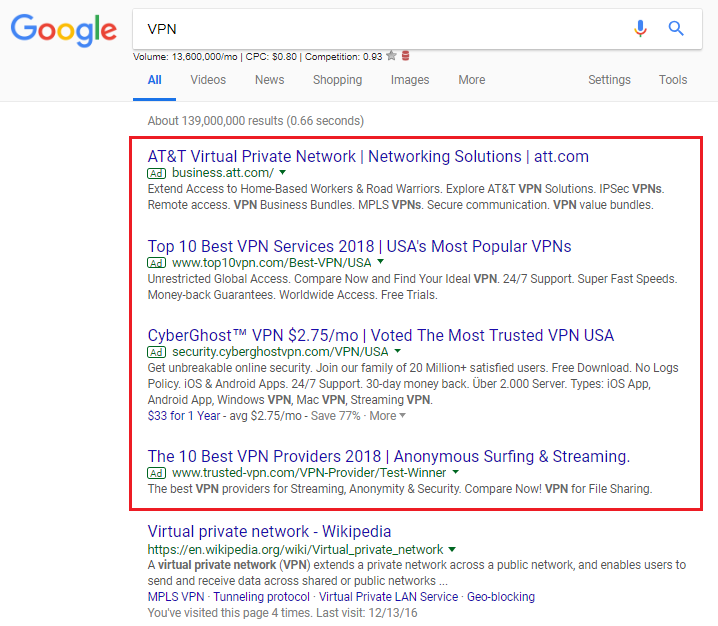
So what does this translate into?
This meant that space for advertising suddenly shrunk and competition to get into the top 4 results intensified.
Many experts predicted that the bids to attain the highest position would increase and those with deep pockets will dominate the ad rankings.
Although Google’s Ad Rank takes into account several factors, bids are one of them and they did have an impact. Bids did go up for placing the ads among the top four and as a result, the cost of operations became unbearable for some – hence, driving out the competition.
Impact on Conversion Rates: Transition from Ranking to Brands Power
So with all this competition, the evolution of VPN users, and earth-shattering changes in the industry, what does it boil down too for VPN affiliates?
CONVERSION RATES!
In its simplest definition, the conversion rate is the percentage of visitors on your website completing the desired goal. Higher conversion rate indicates successful marketing and visitors actually want what you are offering.
A few years ago, conversion rates on affiliate websites were solely based on rankings. VPN providers would pay top dollar to acquire the number one spot on a website.
But with the introduction of persona-based websites and big content publishers entering the industry, conversion rates now depend on a VPN’s brand power as well.
From a user’s point of view, this change has been extremely beneficial. Many VPN providers had to rethink their image and work on improving their brand and product. As a result, we can see many VPN providers having a commendable user base and rebranding themselves as the best solution for a specific purpose.
Take the case of IPVanish, a popular brand in the industry that has been operating for a long time. The VPN provider is the number one choice amongst Kodi users. Over the years, it has promoted itself as the best solution for escaping privacy concerns associated with Kodi.
Same goes for PureVPN, as most of its reviews on different forums and communities, like Trustpilot, suggest its excellent for streaming. While some VPN services are preferred for specific regions, as NordVPN is a favorite for China.
ExpressVPN is another excellent example of branding. The VPN service offers top-notch performance on almost all fronts and charges a significantly higher price from its customers. Despite it being expensive, ExpressVPN sells like hotcakes, no matter which position you place it on your website – that’s the power of a strong brand!
What Happens if we Place a VPN with Low Brand Power at the Top?
From my experience at VPNRanks.com, placing a VPN with low brand power on the number one spot results in many clicks sent to the provider, but no or low conversions.
To find the best VPN with the best conversion rate, our team did several experiments with VPN positioning. Here are the results from one of the experiments where a low brand power VPN was placed at the top position:

It consumed a total of 6,353 unique clicks in a month and resulted in only 136 acquisitions, leading to a poor conversion rate (only 2.14 percent).
Based on these experiments, one of the key insights that our team found was that new visitors, who haven’t used a VPN before, may click and take a look at the unknown brand, but would later fall back to established brands.
Whether it is word of mouth or recommendations by other users in the community, brand power plays a vital role.
How VPNRanks.com Improved Brand Image of a VPN & Increased its Conversion Rate
Over the years, VPNRanks.com’s collaboration with various VPN providers in the industry has taught me that while working on conversion optimization is important, improving brand image and recognition is just as vital.
This is why I am going to share our team’s story of how we helped a particular VPN service (let’s call it XYZ VPN) build its brand image and increased its conversion rate in just one quarter.
*Disclaimer: VPNRanks.com has healthy relationships with its partners and would like to continue working with them in the best spirit, therefore, will keep their names confidential.
Finding & Promoting its Strong Suits
Various VPN providers offer different features, but they perform best for a particular purpose. For instance, some services are excellent for streaming, while others are best for privacy and security. The problem is finding that strong suit and then making it visible.
This is where VPNRanks.com excelled with XYZ VPN. By testing the service on different platforms and for multiple purposes, our team was able to find that unique aspect.
The next step was to mention that service is the best solution in our blogs and make its strongest feature standout in its review.
Similarly, our team constantly gave feedback to the VPN service about its product’s performance, areas of improvement, and what response was received when promoted in different communities.
Create Customized Landing Pages
Landing pages play a very important role in conversion rates. If the visitor does not see the right information with the correct CTA, chances of him or her converting are low.
Therefore, in collaboration with XYZ VPN, customized landing pages were created that highlighted its unique feature. This required changes to the background images and the text written on that page.
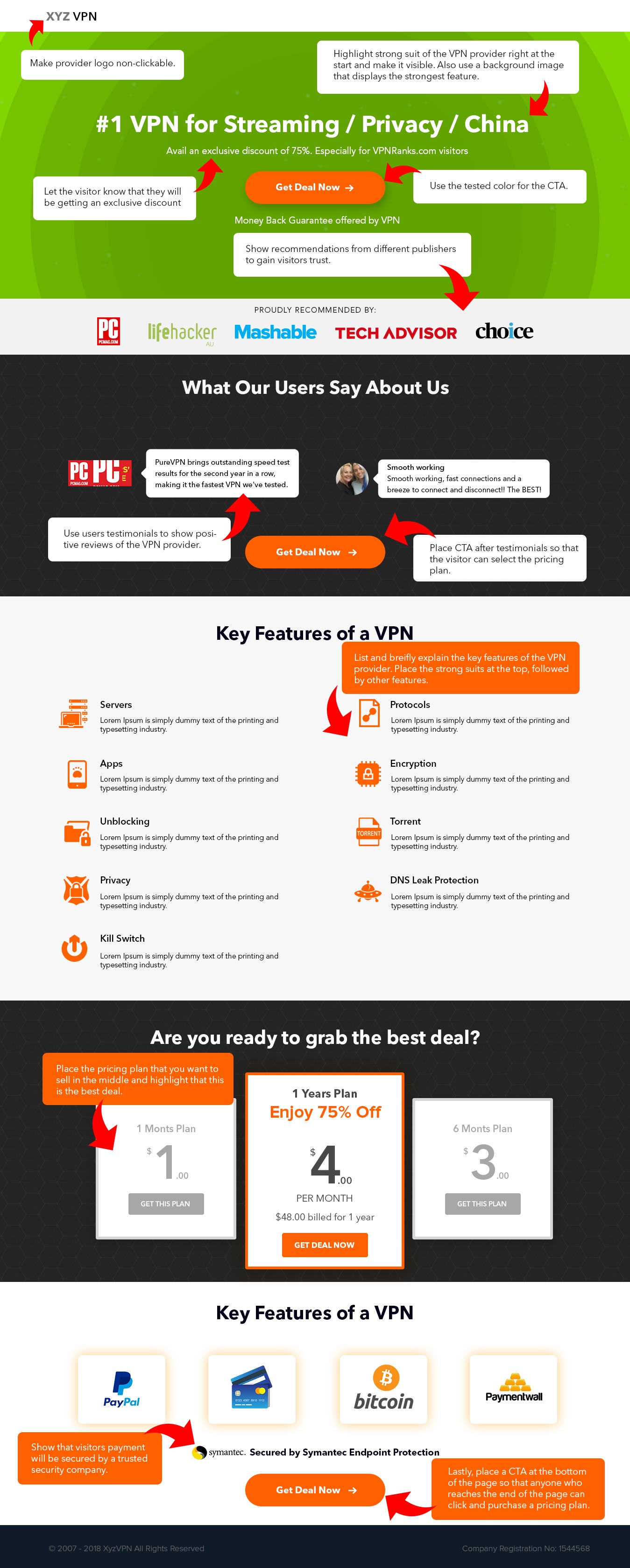
Another addition made to the landing page was exclusivity. Visitors from VPNRanks.com would receive an exclusive discount and this offer was made visible in the first fold of the page.
Experimentation with CTA Colors
While branding was an ongoing process, I remember spending weeks researching and A/B testing different CTA colors. There are countless studies available on the Web that offer insights into CTA colors.

For instance, many suggest that the blue CTA button will attract more clicks compared to a brown-colored button. Taking all these into consideration, our team was able to mold CTA’s as per the color that gave the most conversions.
Wrapping Up: What Does The Future Hold?
This brings me to the end of my article. The VPN industry has gone through several changes. Some good, some bad. But the industry still stands along with several VPN providers and affiliate websites.
However, with legislation like GDPR and users taking back their control over their personal data, a new change is in the air. VPN providers and affiliate websites have to be more transparent than ever before and perhaps work in collaboration to help straighten each other’s image.
As for the conversion rate, the shift from top rankings on a website to commanding a powerful brand image is apparent. I’ve stressed enough on this point in my post and it’s about time VPNs with low brand power start work on it.
But for me, it’s been one hell of a journey. There have been many highs and lows, but the learning experience has been phenomenal.
So, where does the VPN industry go from here? What can we all expect? I will leave you guys with these questions, as only time will tell how things will pan out.
